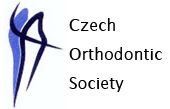


|
|
| Main Page | |
| Welcome message | |
| Overview | |
| Congress programme | |
| Honorary Lecture | |
| Pre-Congress Course | |
| Keynote Lectures | |
| Section for Assistants | |
| Section for Technicians | |
| Time schedule | |
| Abstract list | |
| Registration | |
| Accommodation | |
| Information for authors | |
| Forms and documents | |
| Contacts | |
| Archives | |
|
|
|
| About Bratislava | |
|
|
|


The Congress is organised by the Czech Orthodontic Society and Slovak Orthodontic Society. |
|
The use of presurgical infant orthopedics to treat individuals with cleft lip and palate.
Chris Laspos 
Keynote Lecture - Saturday, September 21, 2019
The term “orthopedics” has a precise application in the treatment of infants with cleft lip and palate. Presurgical infant orthopedics was introduced in the mid 50s as an early therapy for the correction of cleft lip and palate deformities. Nasoalveolar molding represents an evolution of the original technique introduced and popularized by the NYU TEAM. Infants with cleft lip and palate present with displaced nasal tip, depressed alar dome, skewed columella, displaced labial frenum, orbicularis oris that runs up into nose and deformed alveolus. Nasoalveolar Molding (NAM) is used to correct the form and position of the nasal cartilages, premaxilla, and alveolar ridges during the neonatal period (first week till 3-4months of age). It is also used to elongate the columella in infants with bilateral cleft lip and palate.The appliance is made of wire and acrylic nasal stents attached to an intraoral acrylic plate. In effect, this presurgical management of the cleft infant is intended to reduce severity of the oronasal deformity prior to surgery.
This technique takes advantage of the malleability of immature nasal cartilage and its ability to maintain a permanent correction of its form due to the high levels of hyaluronic acid. This is performed by gradual elongation of the nasal stents and the application of forces that are applied to the lip the nose and the alveolar segments. Utilization of the NAM technique has eliminated surgical scars associated with traditional columella reconstruction, has reduced the number and cost of surgical procedures, and has become the standard of care in many Cleft Palate Centers. I will present step by step the utilization of this technique as well as the advantages and disadvantages in the management of individuals born with cleft lip and palate.
Back to the Keynote lectures list
v
| General partner |

|
|
|
| Main partners |

|

|
|
|
| Partners |

|

|
|
|
| Media partners |

|